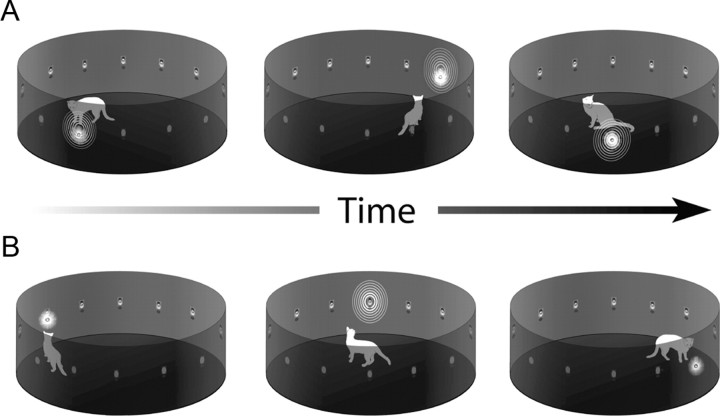Figure 1.
Four cats were raised from birth in darkness, but were exposed daily to periodic visual and/or auditory stimuli in a cylindrical enclosure using two different stimulus exposure paradigms. The animals were free to move anywhere within the enclosure, and the positions and responses shown are illustrative only. In most cases, animals did not react to the stimuli. A, In the coincident exposure paradigm, two animals were exposed to visual–auditory (cross-modal) stimuli that were in spatiotemporal coincidence, but could occur at any location around the circumference of the enclosure. The stimuli were presented at random intervals between 50 and 4000 ms. B, In the random exposure paradigm, two other animals received visual or auditory (modality-specific) stimuli that were presented randomly in space and time with the same frequency. Both groups received 5 h of exposure/d 5 d/week from postnatal day 30 to 8 months of age. Stimuli consisted of flashes of light from LEDs and broadband noise burst from speakers embedded in the wall of the enclosure. At all other times the animals were maintained in darkness.

